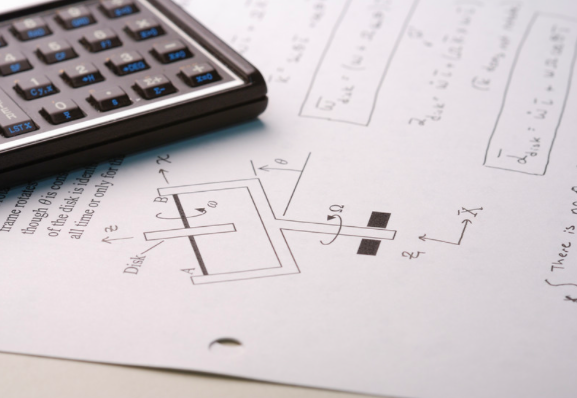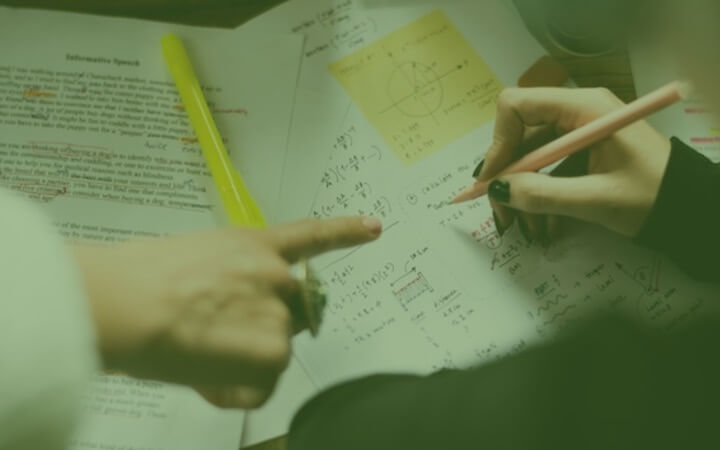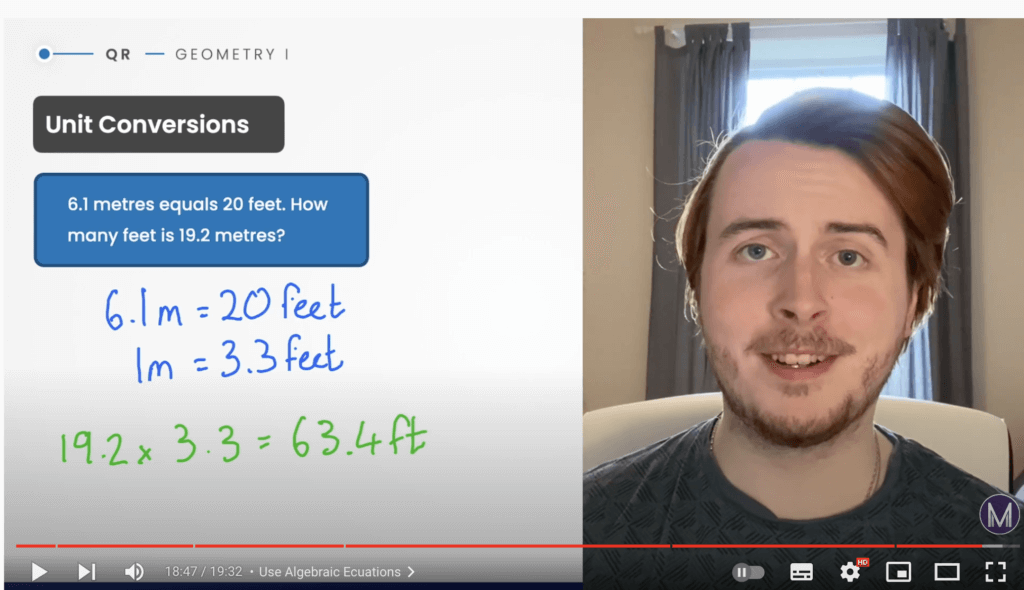A Guide to the Oxford PAT 2024
The Physics Admissions Test (PAT), is an assessment tool used by the University of Oxford to assess candidates’ competencies and consequently, shortlist people to interview for certain courses. Everyone applying to study Physics, Physics and Philosophy, Engineering Science, or Materials Science must sit the PAT. Keep reading our Guide to the Oxford PAT to learn everything you need to know about the PAT 2024 Oxford.
What is the PAT?
The PAT is an exam consisting of Physics and Maths problems. It is a two hour long written test. Candidates who apply to the aforementioned courses have to take the PAT. Admissions tutors select candidates to interview based on their PAT scores and other considerations, including their UCAS application. The university then gives candidates who interview successfully conditional offers.
PAT 2024 is due to take place at the end of October.
PAT Syllabus
Students from all backgrounds take the PAT, which tests intelligence and problem-solving abilities rather than knowledge. Therefore, you may need to learn more on the PAT syllabus and you may need to read ahead. According to Oxford, only 35% of successful candidates did all the work for the PAT themselves without help from a teacher or tutor. Keep reading to dive into the topics set in the PAT 2024.
Furthermore, our PAT experts are Oxford students who have all scored highly in the PAT and are always happy to mentor budding Oxford students in their journey! Find out more here.
Guide to the Oxford PAT: Mathematics Syllabus
The PAT syllabus for mathematics is as follows:
Elementary mathematics:
- Knowledge of elementary mathematics, in particular topics in arithmetic, geometry including coordinate geometry, and probability, will be assumed. Questions may require the manipulation of mathematical expressions in a physical context.
Algebra:
- Knowledge of the properties of polynomials, including the solution of quadratics either using a formula or by factorising.
- Graph sketching including the use of differentiation to find stationary points.
- Transformations of variables.
- Solutions to inequalities.
- Elementary trigonometry including relationships between sine, cosine and tangent (sum and difference formulae will be stated if required).
- Properties of logarithms and exponentials and how to combine logarithms, e.g. log(a) + log(b) = log(ab) .
- Knowledge of the formulae for the sum of arithmetic and geometric progressions to n (or infinite) terms.
- Use of the binomial expansion for expressions such as (a+bx)n, using only positive integer values of n.

Calculus:
- Differentiation and integration of polynomials including fractional and negative powers.
- Differentiation to find the slope of a curve, and the location of maxima and minima.
- Integration as the reverse of differentiation and as finding the area under a curve.
- Simplifying integrals by symmetry arguments including use of the properties of even and odd functions (where an even function has f(x)= f(-x), an odd function has f(-x)= – f(x)).
Guide to the Oxford PAT: Physics Syllabus
The PAT syllabus for Physics is as follows:
Mechanics:
- Distance, velocity, speed, acceleration, and the relationships between them, e.g. velocity as the rate of change of distance with time, acceleration as rate of change of velocity with time. Understand the difference between vector quantities (eg velocity) and scalar quantities (eg speed). Knowledge and use of equations such as speed = distance / time, acceleration = change in velocity / time or the SUVAT equations.
- Interpretation of graphs, e.g. force-distance, distance-time, velocity-time graphs and what the gradient of a curve or area underneath a curve represents.
- Response of a system to multiple forces; Newton’s laws of motion; know the difference between weight (= mg) and mass; vector addition of forces.
- Circular motion including equations for centripetal force (F=mω2r or F=mv2/r) and acceleration (a=v2/r or a=ω2r).
- The meaning of the terms friction, air resistance and terminal velocity and how they can be calculated.
- Levers (including taking moments about a point on an object), pulleys (including calculating the tension in a rope or the overall motion in a system of ropes and pulleys) and other simple machines combining levers, springs and pulleys.
- Springs, including knowledge of Hooke’s law (Force = – kx) and stored potential energy ( = 1/2 kx2 ).
- Kinetic energy (= 1/2 mv2) and gravitational potential energy (= mgh in a constant gravitational field) and their interconversion; what other forms of energy exist (e.g. thermal, sound).
- Conservation of energy and momentum (=mass x velocity); power ( = energy transfer/time) and work ( = force x distance moved in direction of force).
Waves and optics:
- An understanding of the terms longitudinal and transverse waves; and that waves transfer energy without net movement of matter.
- Be able to define the amplitude, frequency, period, wavelength and speed of a wave. Knowledge and use of formulae for the wave speed = wavelength x frequency and frequency = 1 / period (with units of hertz, Hz).
- Basic properties of the electromagnetic spectrum, eg identify and correctly order parts of the spectrum by wavelength or frequency (radio waves, microwaves, IR, visible light, UV, X rays and gamma rays) and the nature and properties of electromagnetic waves (transverse, travel at the speed of light in a vacuum).
- Description of reflection at plane mirrors, where the angle of incidence (the angle between the incident ray and the normal) = angle of reflection (angle between the reflected ray and the normal).
- Refraction, including the definition of refractive index (n) as the ratio of the speed of light in a vacuum to the speed of light in a material and Snell’s law n1sinθ1=n2sinθ2. Elementary properties of prisms and optical fibres including total internal reflection, where total internal reflection occurs at an angle θc when sinθc=n2/n1
- Qualitative understanding of how interference, diffraction and standing waves can occur.

Electricity and magnetism:
- Understanding of the terms current ( = charge / time), voltage (potential difference = energy / charge), charge, resistance ( = voltage / current) and links to energy and power (power = voltage x current, power = energy / time). Knowledge of transformers, including how the number of turns on the primary and secondary coils affect the voltage and current.
- Understanding circuit diagrams including batteries, wires, resistors, filament lamps, diodes, capacitors, light dependent resistors and thermistors. Knowledge of current, voltage and resistance rules for series and parallel circuits.
- Knowledge of the force between two point charges (Force= kQ1Q2/r2(where k is a constant)) and on a point charge in a constant electric field (Force = charge x electric field).
- Understanding that current is a flow of electrons; the photoelectric effect, where photoelectrons are emitted if they are given sufficient energy to overcome the work function of the material, and how to find the energy of accelerated electron beams ( energy = charge x potential difference).
Natural world:
- Atomic structure; that atoms consist of protons, neutrons and electrons, definition of the atomic number, Bohr model of the atom.
- Basic knowledge of bodies in our Solar System, including planets, moons, comets and asteroids. (Name and relative positions of the planets should be known but detailed knowledge of their physical parameters is not required).
- Know what is meant by the phrases ‘phases of the moon’ and ‘eclipses’ and how the position of the observer on the Earth affects their view of these events.
- Knowledge of circular orbits under gravity including orbital speed, radius, period, centripetal acceleration, and gravitational centripetal force. This may include equating the force between two masses due to gravity (F=GM1M2/r2) to centripetal force of a smaller body orbiting a larger body (F=mω2r or F=mv2/r) and use of centripetal acceleration (a=v2/r or a=ω2r).
- Understanding of the terms satellites; geostationary and polar orbits.
Problem solving:
- Problems may be set which require problem solving based on information provided rather than knowledge about a topic.
PAT Format
The PAT is a two-hour written exam marked out of 100. It consists of multiple-choice and long questions. There are 12 MCQs, each worth 2 marks, that form the first section of the exam. The extended questions after that are worth anywhere from 3 to 10 marks each. The mathematical and physics components of the PAT are stirred together and so do not form distinct subject-specific sections as they used to. Read our articles for more information on Section 1 and Section 2.

What is a good score for the PAT 2024?
The Physics departments, and the Engineering and Materials Science departments weight the PAT differently. The former rank all the candidates’ PAT scores and invite those scoring above a certain threshold to interview. The latter do not place as much emphasis on the PAT, making decisions primarily based on UCAS applications.
The PAT does not have a fixed pass mark. You can find the official reports for each year’s PAT on the University of Oxford’s website. Typically the average will be around 50% and the threshold for interview will consequently be a little higher. The scores range from 0% to 100%, however fewer than 1% of candidates score above 90%.
Where do I have to go to take the PAT?
You will usually be able to take the PAT right at your school, if it is an approved testing centre. The deadline for an institution to apply to become as approved testing centre for this year is the end of September 2024. This must be done through your testing centre. We recommend getting all of this done well before the deadline to relieve some of the stress.
Can I retake the PAT?
There is no option to retake the PAT, as there is only one PAT paper each year. If you feel it went badly due to circumstances beyond your control you can submit a special considerations form up to 5 days after the test date.
What does the PAT cost?
The PAT is free however, some testing centres will charge a fee.
Can I use a calculator?
Some calculators are allowed, however not those that solve polynomials or plot graphs. Read the following guidelines about which calculators can be used here.
How do I prepare?
The University of Oxford has all the information that a PAT candidate would need to succeed in the exam. To further simplify things for you, our very own PAT experts have compiled a list of top tips and advice.
Whilst the PAT is a difficult exam, it is by no means impossible to achieve a top score. Our PAT tutors are a testament to the benefits that hard work, organisation and resilience can have when preparing for the PAT. Furthermore, our PAT past papers are a great resource for preparing for the exam. We wish you all the best and we hope to see you at Oxford in the coming years!



